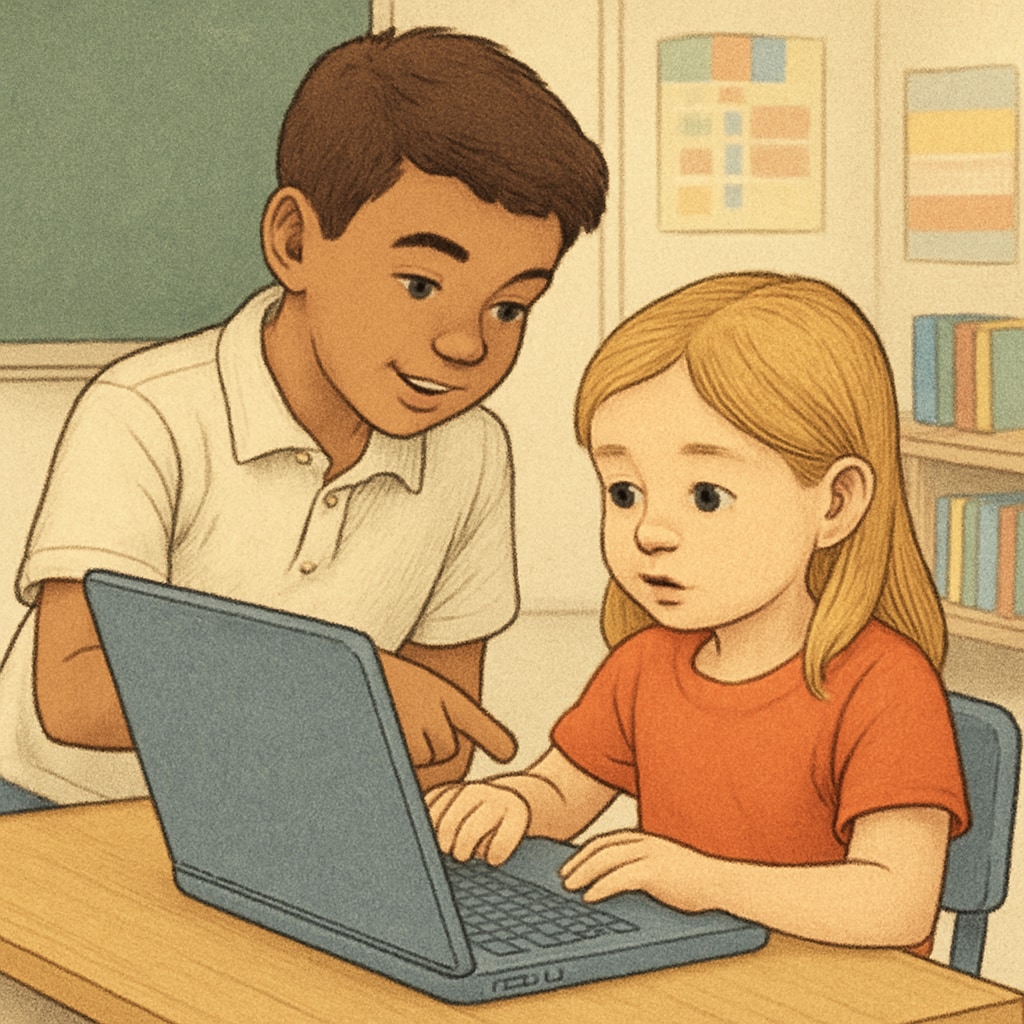Creating meaningful connections between younger and older students can unlock the transformative power of cross-age collaboration. Partnering kindergarteners with fourth graders in structured projects enriches learning experiences for both age groups. This article highlights the educational benefits of such partnerships, focusing on structured computer activities. It also offers eight innovative ideas to inspire educators seeking to foster collaborative environments. With a mix of creativity and strategy, these initiatives can bridge age gaps and create lasting impressions on young learners.
Why Cross-Age Collaboration Works
Pairing kindergarteners with fourth graders introduces a unique dynamic. The older students take on mentorship roles, developing leadership and empathy, while the younger children benefit from personalized attention and guidance. This symbiotic relationship fosters confidence, communication, and problem-solving skills on both sides.
Research supports cross-age collaboration as a powerful educational tool. According to studies outlined by the Britannica on collaborative learning, students engaged in peer teaching often achieve higher levels of understanding and retention. Additionally, younger children exposed to older role models often develop a stronger motivation to learn, as they aspire to emulate their mentors.
Eight Creative Partner Project Ideas
Here are eight structured activities designed to promote engagement and learning between kindergarteners and fourth graders:
- Storytime Swap: Fourth graders help kindergarteners write and illustrate short stories. The pairs then read their creations to the class.
- Gardening Buddies: Students work together to plant flowers or vegetables, tracking growth over time. This project combines teamwork with environmental education.
- Science Experiments: Older students guide younger ones through simple experiments, explaining concepts in age-appropriate ways.
- Art Collaboration: Pairs create murals or art pieces, blending the creativity of kindergarteners with the technical skills of fourth graders.
- Board Game Design: Teams invent educational board games, with fourth graders assisting in rule creation and kindergarteners contributing imaginative ideas.
- Structured Computer Activities: Fourth graders introduce basic coding games or educational apps to their younger partners, fostering early tech literacy.
- Community Service Projects: Students collaborate on service initiatives, such as creating cards for a local nursing home.
- Buddy Reading Sessions: Weekly reading sessions help kindergarteners improve literacy while fourth graders strengthen their leadership skills.
Implementing Structured Computer Activities
Among these innovative ideas, structured computer activities stand out as a modern and practical approach to cross-age learning. Introducing technology in the classroom prepares students for a digital future while fostering collaboration.
Here are some tips for integrating computer-based projects:
- Choose Age-Appropriate Software: Select educational tools that are engaging for both kindergarteners and fourth graders. Apps like ScratchJr and ABCmouse are excellent starting points.
- Define Clear Objectives: Establish goals for the activity, such as learning basic coding or completing a digital puzzle.
- Provide Training: Fourth graders should be familiarized with the software beforehand so they can confidently guide their younger partners.
- Encourage Problem-Solving: Let students troubleshoot minor issues together, promoting critical thinking and teamwork.
- Reflect on Progress: After each session, have pairs discuss what they learned and set goals for the next activity.
Integrating structured computer activities not only enhances technical skills in both age groups but also strengthens their ability to work collaboratively. For more on the benefits of tech-based learning, explore this Wikipedia article on educational technology.

The Long-Term Impact of Cross-Age Projects
Partner projects between kindergarteners and fourth graders have far-reaching benefits beyond the classroom. Younger students gain confidence, social skills, and early exposure to concepts that might otherwise be challenging. Meanwhile, older students develop leadership abilities, patience, and a sense of responsibility.
These experiences also foster a sense of community within the school. Cross-age partnerships break down barriers between grade levels, creating a culture of collaboration and mutual respect. As a result, students carry these lessons into their future educational and social interactions.

Conclusion
Cross-age collaboration, such as pairing kindergarteners and fourth graders, is a powerful educational strategy. Structured activities, especially computer-based ones, offer a modern approach to fostering teamwork and skill development. By implementing the ideas and strategies outlined here, educators can create enriching experiences that benefit students academically, socially, and emotionally.
As schools continue to explore innovative teaching methods, cross-age partnerships stand out as a shining example of how collaboration can transform the learning process. Whether through art, science, or technology, these partnerships unlock the potential of students, nurturing a love of learning that lasts a lifetime.


